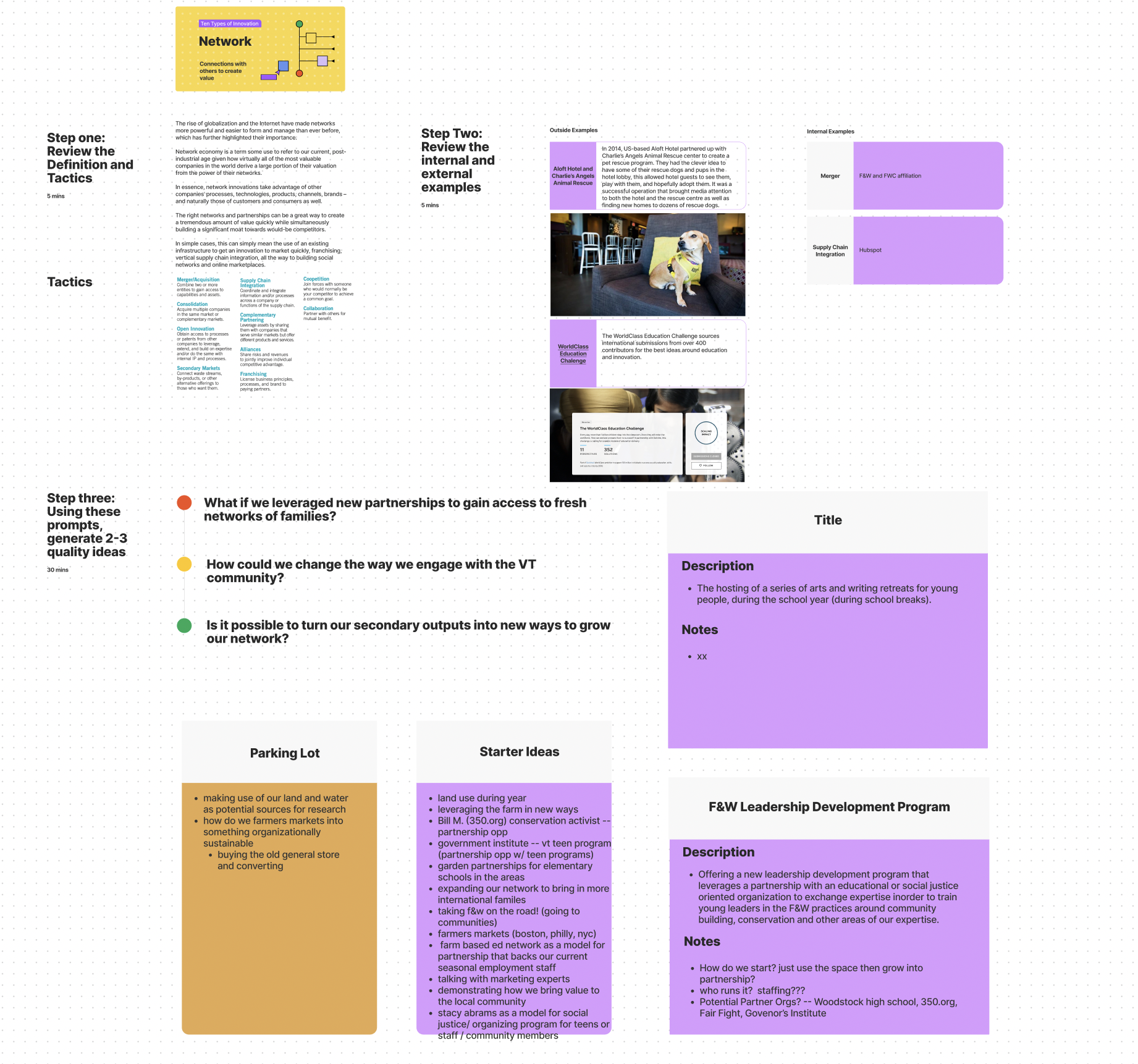Crafting an Organizational Strategy for Good
Farm and Wilderness Foundation
Farm and Wilderness Foundation, Plymouth Vermont
The Opportunity
Farm & Wilderness, a collection of summer camps and conservation programs rooted in Vermont, was at a crossroads. Emerging from the pandemic with a renewed mission and updated values, they were ready to look ahead—but needed a strategy that was both imaginative and actionable. The challenge? Crafting a future-facing plan grounded in design thinking, built with internal capacity in mind, and responsive to a world in flux.
The Approach
Our Approach for the strategic planning process.
We led Farm & Wilderness through a design-led strategic planning process anchored in human-centered design, systems thinking, and practical implementation. Here's how we approached it:
Discovery
The journey began with a discovery phase, involving a series of facilitated sessions with organization's board to discuss their hopes, fears, and ideas about how to address them.
We kicked off conducting interviews, board visioning sessions, and an internal capacity audit. Using a SWOT analysis, we identified internal strengths to build on, challenges to address, and key opportunities for innovation.
We paired this with an analysis explore broader trends in education, conservation, and the nonprofit sector—ensuring the strategy was attuned to shifts in policy, and culture.
Define
Combining these insights with the internal audit of the organization’s current capacity to deliver their core offering, we identified opportunities and pain points explore in their new strategy defining seven key areas to focus their strategic planning efforts.
A preview of our design-led planning approaches can be seen below.
To inspire bold ideas, we facilitated ideation sessions with board and staff using Doblin’s 10 Types of Innovation framework. This helped generate fresh concepts that expanded beyond programmatic changes—into operational models, funding strategies, and community engagement.
From this, we distilled seven Opportunity Areas for growth and innovation.
The synthesis of our ideation session and competitive analysis sourced 7 Opportunity Areas for Farm and Wilderness’s strategic plan to address.
Collaborative Design at Every Level
Strategy shouldn't live in a boardroom. We engaged every staff member and board trustee using collaborative tools like FigJam. This inclusive approach ensured the plan reflected real experiences on the ground and built shared ownership across the organization.
“Growing for Good” is the title they selected for the plan making easy to socialize with their internal team, families they serve, community members and donors.
Design
Together, we created "Growing for Good," a plan title that captured the spirit of the work and made it easy to socialize with campers, families, community members, and donors.
The strategy was organized around three guiding principles:
Running a solid organization
Nurturing their campers and staff personal development
Becoming a net positive gain to their surrounding community
These pillars guided the plan, emphasizing strong internal systems, holistic personal development, and community engagement.
Deliver
Once the board approved the plan, we focused on implementation of the plan. Key activities were outlined to align with the plan's goals – forming a 3 year operational plan. We then worked with their finance department to develop a fiscal model that analyzed historical revenue and expenses to inform resource allocation for the new opportunities outlined in the plan. Together, these tools helped evaluate existing work and allocate resources effectively.
The Outcome
Through a design-led strategic planning process, Farming Wilderness created a forward-looking roadmap for success. They developed internal capabilities to sustain design-led strategies and embraced ongoing strategic thinking. By aligning their operations and exploring new opportunities, they effectively navigated an ever-changing landscape, fulfilling their mission of growth for the greater good.







